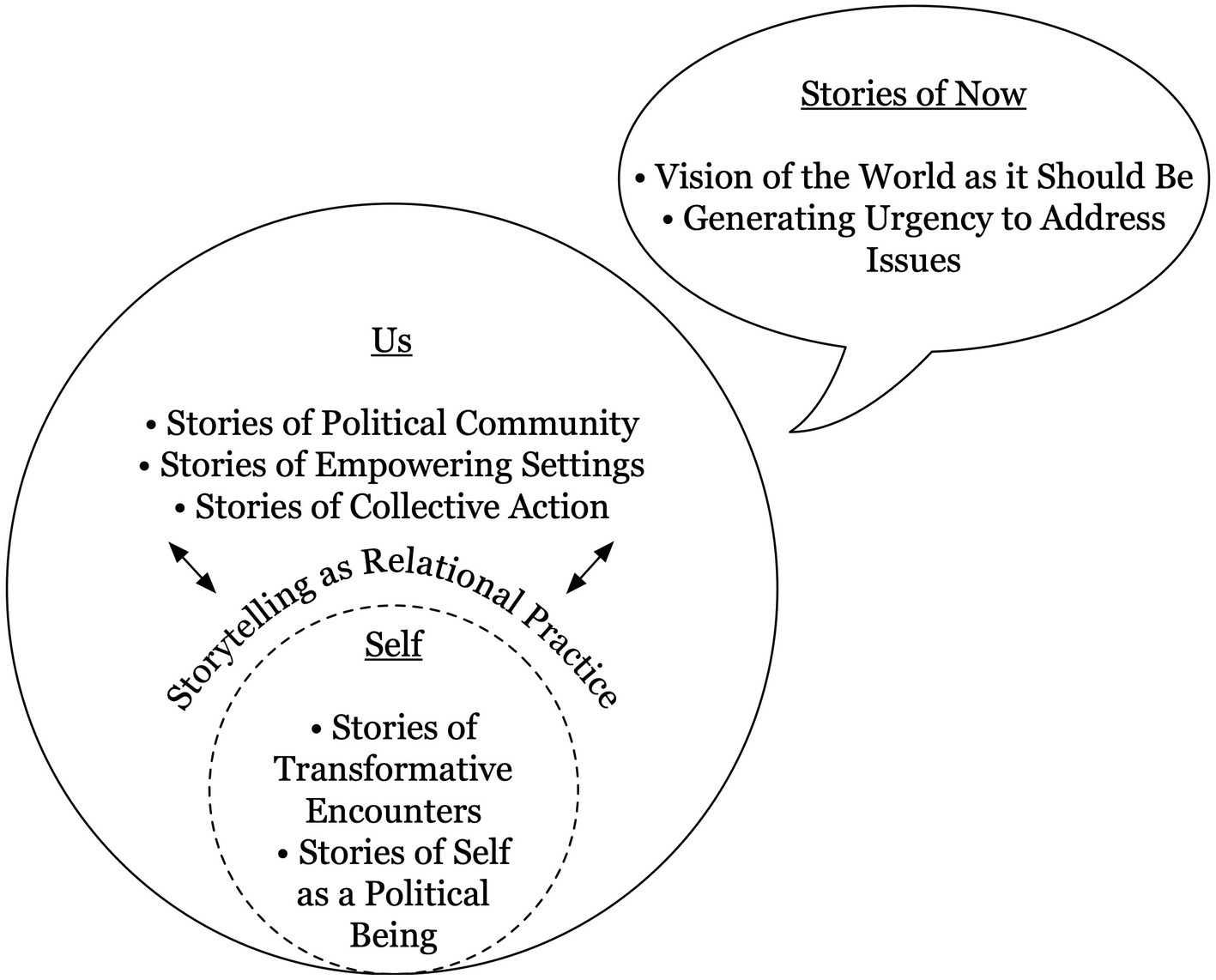Cultural experiences and perspectives can be conveyed through memorable narratives by embedding shared values, customs, arts, and traits of a social group within personal and literary writing. This can be achieved by incorporating specific dialects, idioms, or nicknames that accurately portray a particular culture.
Utilizing gripping and exciting plot and structure, as well as character description and details, can also allow readers to feel connected to the cultural experiences being depicted in the narrative. By effectively conveying cultural perspectives through narratives, authors have the power to bridge gaps and foster understanding between diverse communities.

Credit: www.scribd.com
Understanding Cultural Narratives
Cultural perspectives can be effectively conveyed through narratives by incorporating shared values, customs, arts, and traits of a particular social group into personal and literary writing. By using specific dialects, idioms, or nicknames, the unique aspects of a culture can be accurately portrayed, allowing readers to connect and understand different cultural experiences.
Defining Cultural Narratives
Cultural narratives are powerful tools for conveying the diverse perspectives and experiences of different societies and communities. These narratives consist of stories, folklore, myths, and literature that encapsulate the values, customs, traditions, and ideologies of a particular culture. By exploring the unique narratives of various cultures, we can gain a deeper understanding of their rich history, social structures, belief systems, and worldviews.
Role Of Cultural Narratives In Society
Cultural narratives play a significant role in shaping societal beliefs, norms, and behaviors. They serve as a reflection of a society’s collective identity, providing individuals with a sense of belonging and shared experience. These narratives foster empathy, understanding, and appreciation for diverse cultures, promoting inclusivity and tolerance in our multicultural world.
Moreover, cultural narratives serve as a means of preserving a culture’s heritage and passing it on to future generations. They act as a medium through which values, traditions, and lessons are transmitted, ensuring the cultural continuity and resilience of a community. Cultural narratives can unite people, transcend language barriers, and create bridges between cultures by highlighting shared human experiences.
In addition, cultural narratives can challenge dominant ideologies, question societal norms, and offer alternative perspectives. They have the power to raise awareness about social issues, promote social change, and give voice to marginalized communities. By exploring these narratives, we can gain insights into different ways of seeing the world, encouraging critical thinking and cultural dialogue.
Overall, understanding cultural narratives allows us to appreciate the richness and diversity of human experiences. By recognizing and embracing different cultural perspectives, we can foster a more inclusive, empathetic, and connected society.
Elements Of Cultural Narratives
Conveying cultural perspectives through narratives is a powerful way to bridge understanding between different communities and celebrate diverse cultures. Cultural narratives encompass a wide range of elements that reflect the unique customs, traditions, language, arts, and literature of a particular society. Through the art of storytelling, these elements serve as windows into different cultural perspectives, allowing readers to gain insights into the values, beliefs, and experiences of a community.
Language And Dialects
In cultural narratives, language and dialects play a crucial role in shaping the narrative’s authenticity and reflecting the traditions and identity of a specific culture. Writers may use specific dialects, idioms, or nicknames to accurately portray the nuances and intricacies of a particular language. This not only immerses readers in the cultural context but also adds depth and richness to the storytelling experience.
Customs And Traditions
Cultural narratives act as a platform to showcase the customs and traditions of various societies. Authors can highlight traditional ceremonies, festivals, rituals, or even everyday practices to provide readers with a deeper understanding of the cultural fabric that shapes a community. By incorporating these customs and traditions into the narrative, readers can gain insight into the values, beliefs, and social norms of different cultures.
Arts And Literature
Arts and literature are essential elements in cultural narratives, offering unique perspectives on a society’s values, history, and experiences. Authors may incorporate traditional forms of art, such as painting, music, dance, or storytelling, as central themes or motifs within their narratives. By doing so, they not only showcase the richness of a particular culture’s artistic expressions but also invite readers to explore and appreciate the diversity of human creativity.
Impact Of Cultural Narratives
Conveying cultural perspectives through narratives has a profound impact on shaping cultural identity and fostering cross-cultural understanding. The power of narratives lies in their ability to preserve and transmit the rich tapestry of cultural experiences and perspectives across generations and societies.
Shaping Cultural Identity
Cultural narratives play a pivotal role in shaping the identity of communities and individuals. They provide a platform to celebrate and preserve cultural traditions, folklore, and histories. By sharing stories that reflect the values, customs, and experiences of a particular culture, narratives contribute to the formation and reinforcement of cultural identity.
Fostering Cross-cultural Understanding
Cultural narratives serve as bridges that connect people from diverse backgrounds. Through compelling and empathetic storytelling, narratives have the potential to promote empathy, tolerance, and appreciation for the diversity of human experiences. They enable individuals to embrace and understand the nuances and complexities of different cultural perspectives.

Credit: www.fiverr.com
Examples Of Effective Cultural Narratives
Cultural narratives effectively convey diverse perspectives, utilizing shared values, customs, and arts unique to each society. Specifically, using distinct dialects and idioms can authentically capture a culture’s essence. Gripping plots and character details further immerse readers in the cultural experience, creating a meaningful and memorable narrative.
Literary Works
When it comes to conveying cultural perspectives through narratives, literary works play a significant role. Authors have the power to transport readers to different cultures and immerse them in unique experiences. Through vivid descriptions, rich symbolism, and powerful storytelling techniques, literary works can effectively convey cultural perspectives. For example, in The Kite Runner by Khaled Hosseini, readers gain insight into the culture and traditions of Afghanistan, while also exploring universal themes of friendship, loyalty, and redemption. Similarly, One Hundred Years of Solitude by Gabriel Garcia Marquez takes readers on a journey through the mythical town of Macondo, allowing them to explore the rich tapestry of Latin American culture.Real-life Scenarios
In addition to literary works, real-life scenarios can also be powerful avenues for conveying cultural perspectives. These narratives provide authentic glimpses into the lived experiences of individuals from different cultures. Documentaries, autobiographies, and personal essays are examples of real-life scenarios that can effectively convey cultural perspectives. For instance, the documentary Forks Over Knives explores the cultural perspectives on food and health by examining the practices of different communities around the world. By showcasing real people and their stories, viewers gain a deeper understanding of cultural beliefs and practices. Overall, using a combination of literary works and real-life scenarios allows for a comprehensive and compelling portrayal of cultural perspectives. These narratives not only entertain and engage readers but also foster empathy, understanding, and appreciation for diverse cultures. By taking readers on a journey through different cultural landscapes, narratives have the power to bridge gaps, break stereotypes, and promote a more inclusive society.
Credit: www.frontiersin.org
Frequently Asked Questions For Conveying Cultural Perspectives Through Narratives
How Can Cultural Experiences And Perspectives Be Conveyed Through Memorable Narratives?
Cultural experiences and perspectives can be conveyed through memorable narratives by embedding shared values, customs, arts, and traits of a social group within personal and literary writing. For example, using specific dialects, idioms, or nicknames accurately portrays a particular culture.
What Is An Example Of A Cultural Perspective?
Cultural perspective is the way an individual is shaped by their environment. For example, a Christian woman may find the practice of Polygyny in Islam unacceptable due to cultural differences.
How Can Cultural Experiences And Perspectives Be Conveyed Through Memorable Narratives?
Cultural experiences and perspectives can be effectively conveyed through memorable narratives by incorporating shared values, customs, arts, and traits of a social group into personal and literary writing. Using specific dialects, idioms, or nicknames can accurately portray a particular culture, creating a deep connection with readers.
What Is The Importance Of Cultural Perspectives In Narratives?
Cultural perspectives in narratives hold immense importance as they provide insights into different societies, allowing readers to broaden their understanding of diverse cultures and traditions. By incorporating cultural perspectives, narratives offer a unique and immersive reading experience that fosters empathy and appreciation for cultural diversity.
Conclusion
Narratives serve as powerful vessels for conveying cultural experiences and perspectives by infusing shared values, customs, and traits of a society, creating a bridge for understanding across diverse cultures. By using specific dialects, idioms, and character details, narratives can authentically depict the rich tapestry of cultural diversity and foster empathy and connection among readers.


Leave A Comment